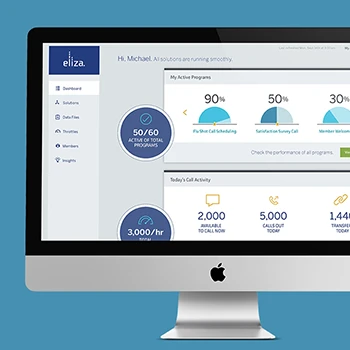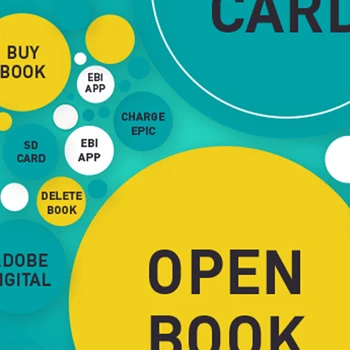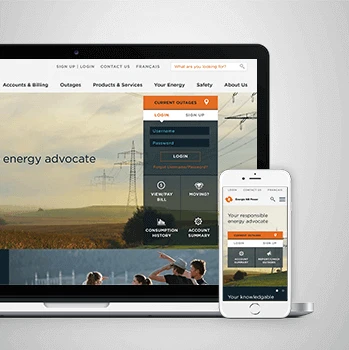What exactly is UX staff augmentation and when does our organization need it?
UX staff augmentation provides experienced UX professionals who integrate directly into your existing team to expand your delivery capacity when demand exceeds your current resources. Unlike outsourcing entire projects, our experts work alongside your internal staff, following your processes while bringing deep Experience Thinking methodology to enhance your capabilities across strategy, user research, and UX design.
Tip: Consider staff augmentation when your project timelines are fixed but internal capacity is limited, rather than delaying important UX initiatives.
How does Akendi's staff augmentation approach differ from traditional consulting or outsourcing?
Our staff augmentation model integrates our experts directly into your organization as temporary team members, adapting to your culture, processes, and structures. We follow your project plans while contributing Experience Thinking expertise that addresses brand, content, product, and service experiences holistically. This embedded approach ensures knowledge transfer and capability building rather than just task completion.
Tip: Staff augmentation works best when you have clear internal processes and project management but need additional skilled hands to execute.
What Experience Thinking capabilities do your augmented staff members bring?
Our professionals bring expertise across all four quadrants of Experience Thinking: brand experience strategy, content experience design, product experience development, and service experience optimization. This holistic approach ensures augmented staff members contribute to connected experiences rather than isolated touchpoints, helping your organization deliver cohesive user journeys throughout the entire experience lifecycle.
Tip: Brief augmented staff on your complete experience ecosystem, not just the specific project area, to maximize their strategic contribution.
How do you match the right UX professionals to our specific project needs?
We guide you through talent identification based on your goals, project complexity, required skills, and organizational culture. Our matching process considers technical expertise, industry experience, collaboration style, and cultural fit. With over 220 clients across multiple sectors, we understand diverse organizational contexts and can select professionals who integrate smoothly while delivering immediate value.
Tip: Provide specific examples of your current challenges and team dynamics during the matching process to ensure optimal fit.
What types of UX projects and challenges are best suited for staff augmentation?
Staff augmentation excels for projects with defined scopes, established processes, and clear timelines where you need additional capacity rather than strategic direction. Common scenarios include design system development, user research programs, product redesigns, usability testing initiatives, and digital transformation projects where internal teams need supplemental expertise to meet deadlines.
Tip: Staff augmentation provides maximum value when your project requirements are well-defined and you have strong internal project management capabilities.
How does staff augmentation support our organization's UX maturity development?
Beyond immediate project delivery, our embedded professionals transfer knowledge, introduce best practices, and demonstrate advanced UX methodologies to your internal team. This capability building accelerates organizational UX maturity through hands-on learning, process improvements, and exposure to Experience Thinking approaches that create more strategic, connected user experiences.
Tip: Structure augmentation engagements to include knowledge transfer activities and documentation to maximize long-term organizational benefit.
What role does foresight design play in your staff augmentation approach?
Foresight design involves anticipating future user needs and market changes to create resilient solutions. Our augmented professionals bring this forward-thinking perspective to your projects, helping identify emerging trends, evolving user behaviors, and technological shifts that could impact your experience strategy. This ensures your current work remains relevant as conditions change.
Tip: Include trend analysis and future scenario planning in augmentation scopes to build solutions that adapt to changing user expectations.
How quickly can augmented UX professionals integrate into our existing workflows?
Our professionals are experienced in adapting to diverse organizational contexts and can typically integrate productively within 1-2 weeks. We facilitate smooth onboarding through stakeholder introductions, process documentation review, and culture orientation. The Experience Thinking framework provides common language that helps bridge different organizational approaches to UX work.
Tip: Prepare comprehensive project background materials and schedule team introductions before augmented staff start to accelerate integration.
What onboarding and integration support do you provide?
We handle initial talent introduction, facilitate stakeholder meetings, provide project context briefings, and ensure smooth integration into your organizational structure. Our approach adapts to your specific needs, whether you prefer hands-on integration support or more independent professional placement. We maintain regular touchpoints to ensure successful collaboration throughout the engagement.
Tip: Assign an internal mentor or buddy to help augmented staff navigate company culture and informal processes during their first few weeks.
How do you ensure augmented staff understand our brand and user context?
We conduct thorough briefings on your brand strategy, user research, competitive landscape, and business objectives before professionals begin work. Using Experience Thinking principles, we ensure augmented staff understand how their work connects to broader experience goals across brand, content, product, and service touchpoints. This context enables strategic contribution rather than just tactical execution.
Tip: Provide access to existing user research, brand guidelines, and competitive analysis to help augmented staff understand the full experience context.
What happens when augmented staff need to collaborate across different time zones?
We have extensive experience managing remote and distributed collaborations across multiple time zones. Our professionals are skilled in asynchronous communication, collaborative tools, and flexible scheduling approaches that maintain productivity across geographic boundaries. We establish clear communication protocols and leverage digital collaboration platforms effectively.
Tip: Establish core collaboration hours that work for all team members and use asynchronous documentation to maintain project momentum.
How do you handle integration when our team uses specific tools or methodologies?
Our professionals are adaptable and experienced with diverse UX tools, methodologies, and organizational approaches. We quickly learn your specific toolsets, processes, and frameworks while contributing Experience Thinking methods that can enhance your existing approaches. This flexibility ensures seamless integration without disrupting established workflows.
Tip: Provide tool access and training materials early in the engagement to minimize setup time and maximize productive collaboration.
What communication and feedback structures do you establish?
We establish regular check-ins, progress updates, and feedback loops that align with your project management style and organizational culture. Communication structures include direct team collaboration, stakeholder reporting, and Akendi leadership touchpoints to ensure successful outcomes. We adapt communication frequency and formats to your preferences.
Tip: Define communication expectations, update frequencies, and escalation procedures upfront to prevent misunderstandings during project execution.
How do you manage the transition when augmentation engagements end?
We plan transition processes from engagement start, including knowledge documentation, methodology transfer, and capability handover to internal teams. Our approach ensures project continuity and organizational learning retention after augmented professionals complete their assignments. This includes training internal staff on any new processes or tools introduced during the engagement.
Tip: Build transition planning into project timelines from the beginning rather than addressing knowledge transfer as an afterthought.
What team models work best with staff augmentation?
Based on Experience Thinking organizational models, staff augmentation works effectively within centralized, decentralized, and matrix team structures. The key is clear role definition and communication channels. Centralized teams benefit from additional specialized expertise, decentralized teams gain outside perspective, and matrix teams can flex capacity across different projects as needed.
Tip: Assess your current team structure and identify specific capability gaps before determining how many augmented professionals you need and what expertise they should bring.
How do augmented professionals work within agile development environments?
Our professionals are experienced in agile methodologies and integrate seamlessly into sprint planning, daily standups, retrospectives, and iterative design processes. They understand how UX work fits within agile timelines and can adapt Experience Thinking approaches to agile cadences while maintaining user-centered focus throughout development cycles.
Tip: Include augmented UX professionals in all agile ceremonies from day one to ensure they understand team dynamics and project rhythm.
What's the ideal ratio of augmented to internal UX staff?
The optimal ratio depends on your project scope, internal capabilities, and knowledge transfer goals. Generally, maintaining at least 50% internal staff ensures organizational knowledge retention and cultural continuity. However, specialized projects might require higher augmentation ratios temporarily. We help determine the right balance based on your specific situation and objectives.
Tip: Start with a smaller augmentation ratio to assess integration effectiveness before scaling up, especially if this is your first staff augmentation experience.
How do you handle leadership and decision-making responsibilities?
Augmented professionals typically contribute expertise and execute tasks under your internal leadership structure. However, we can provide senior professionals who can take on leadership roles when needed. The approach depends on your organizational needs, project complexity, and internal capabilities. We clarify authority and responsibility structures before engagements begin.
Tip: Define decision-making authority clearly upfront, including which choices require internal approval versus what augmented staff can decide independently.
What happens when augmented staff identify process improvements or organizational issues?
Our professionals are encouraged to share insights and improvement recommendations based on their cross-industry experience. Using Experience Thinking principles, they can identify process gaps, workflow inefficiencies, or organizational barriers that limit UX effectiveness. We facilitate these discussions constructively while respecting your organizational authority and culture.
Tip: Create formal channels for augmented staff to share improvement suggestions, such as retrospective sessions or feedback meetings with leadership.
How do you ensure knowledge sharing and collaboration between augmented and internal staff?
We actively promote knowledge transfer through collaborative work sessions, methodology demonstrations, documentation sharing, and informal learning opportunities. Our Experience Thinking approach emphasizes connected thinking that helps both augmented and internal staff understand how different expertise areas contribute to holistic user experiences.
Tip: Schedule regular knowledge-sharing sessions where augmented staff can teach new methods or tools to internal team members.
How does foresight design thinking influence team collaboration in augmented environments?
Foresight design requires collaborative exploration of future scenarios and emerging trends. Our UX professionals facilitate forward-looking discussions that help teams anticipate changing user needs, technology evolution, and market shifts. This collaborative future-thinking strengthens both immediate project outcomes and long-term strategic planning capabilities.
Tip: Include regular horizon-scanning sessions in team activities to ensure everyone contributes to understanding future challenges and opportunities.
How does staff augmentation transfer UX capabilities to our internal team?
Capability transfer happens through direct collaboration, mentoring, documentation, and practical demonstration of Experience Thinking methodologies. Our professionals work alongside your team members, explaining decision-making processes, sharing tools and templates, and involving internal staff in advanced UX techniques. This hands-on learning approach builds lasting organizational capabilities.
Tip: Assign internal team members to work closely with augmented professionals on key activities to maximize knowledge absorption and skill development.
What specific UX skills and methodologies can we expect our team to learn?
Your team can learn advanced user research techniques, Experience Thinking framework application, design system development, usability testing methodologies, journey mapping approaches, and strategic UX planning methods. The specific skills depend on your project focus and learning objectives. We tailor knowledge transfer to your team's current capabilities and growth goals.
Tip: Identify specific skills gaps in your internal team before engagement begins and explicitly include capability building in project objectives.
How do you document and formalize the knowledge transfer process?
We create comprehensive documentation including methodology guides, template libraries, process workflows, and decision frameworks that your team can reference long after augmentation ends. This documentation captures Experience Thinking approaches adapted to your organizational context, ensuring sustainable capability development rather than temporary skill access.
Tip: Plan documentation time into project schedules and assign internal team members to collaborate on creating knowledge transfer materials.
What ongoing support is available after augmented staff complete their assignments?
We provide post-engagement consultation, methodology coaching, and continued access to expertise as your team applies newly learned capabilities independently. This support helps bridge the transition from guided to autonomous application of advanced UX methods. Support levels can be customized based on your team's confidence and ongoing needs.
Tip: Schedule follow-up check-ins 30 and 90 days after augmentation ends to address questions and challenges as your team applies new capabilities.
How do you measure the success of capability transfer and skill development?
We establish capability assessment baselines, track skill development throughout engagements, and evaluate post-engagement application of learned methods. Success measures include methodology adoption, quality improvement in deliverables, increased strategic thinking in UX approaches, and enhanced ability to apply Experience Thinking principles independently.
Tip: Define specific capability development goals at engagement start and create assessment methods to track progress and demonstrate value.
What role does mentoring play in your staff augmentation approach?
Mentoring is integral to our approach, with senior augmented professionals providing guidance, career development insights, and strategic thinking development to your internal team members. This relationship-based learning creates deeper capability development and professional growth that extends beyond specific project completion.
Tip: Pair junior internal staff with senior augmented professionals for intensive mentoring relationships that accelerate professional development.
How does staff augmentation help us develop internal UX leadership capabilities?
Senior augmented professionals can coach internal team members in strategic thinking, stakeholder management, and UX program development. This leadership development focuses on applying Experience Thinking at organizational levels, managing UX operations, and building business cases for user-centered design investments.
Tip: Include leadership development objectives in staff augmentation planning, especially for internal team members being groomed for senior UX roles.
How do you ensure project quality and deliverable standards with augmented staff?
Our professionals follow established quality assurance processes, peer review systems, and Experience Thinking methodology standards while adapting to your specific quality requirements. We maintain Akendi's quality standards while respecting your project criteria and deliverable formats. Regular check-ins ensure alignment with your expectations throughout project execution.
Tip: Share your quality standards, review processes, and deliverable templates early so augmented staff can adapt their work to your organizational requirements.
What happens when project requirements change during staff augmentation engagements?
Our professionals are experienced in adaptive project management and can adjust to changing requirements while maintaining project momentum. We establish change management processes that balance flexibility with scope control, ensuring requirement changes are managed effectively without compromising deliverable quality or timeline feasibility.
Tip: Establish clear change management processes and approval authorities before projects begin to handle scope adjustments efficiently.
How do you handle situations where augmented staff expertise exceeds internal capabilities?
When augmented professionals bring advanced capabilities, we focus on knowledge transfer and capability building rather than creating dependency. Using Experience Thinking principles, we help internal teams understand the strategic context and methodology behind advanced techniques, ensuring sustainable organizational capability development.
Tip: Frame advanced expertise as learning opportunities rather than dependencies, and explicitly plan for internal team skill development in these areas.
What project management and communication tools do your augmented staff use?
Our professionals are proficient with diverse project management platforms, design tools, and communication systems commonly used in UX work. We adapt to your existing toolchain while potentially introducing efficiency improvements based on cross-industry experience. Tool flexibility ensures smooth integration without disrupting established workflows.
Tip: Provide comprehensive tool access and training materials at engagement start to minimize setup time and maximize productive collaboration.
How do you measure and report on augmented staff performance and project progress?
We establish performance metrics aligned with your project objectives, including deliverable quality, timeline adherence, stakeholder satisfaction, and capability transfer success. Reporting structures adapt to your preferences, providing visibility into both immediate project progress and longer-term organizational benefit from staff augmentation.
Tip: Define success metrics and reporting preferences during engagement planning to ensure performance measurement aligns with your organizational priorities.
What risk management strategies do you employ with staff augmentation?
Risk management includes redundant expertise coverage, knowledge documentation, transition planning, and continuous performance monitoring. We identify potential risks early and develop mitigation strategies that protect project continuity while ensuring organizational learning retention even if individual augmented professionals become unavailable.
Tip: Include risk assessment and mitigation planning in staff augmentation agreements, especially for critical projects with tight timelines.
How does foresight design influence project execution planning with augmented staff?
Foresight design requires building adaptive capacity into project execution, anticipating how user needs and market conditions might change during project timelines. Our augmented professionals help structure projects with sufficient flexibility to accommodate emerging insights while maintaining delivery focus and timeline commitments.
Tip: Build scenario planning and adaptive milestones into project plans to accommodate learning and market changes during execution.
What specific business outcomes can we expect from UX staff augmentation?
Expected outcomes include accelerated project delivery, enhanced UX quality, expanded organizational capabilities, reduced hiring costs, access to specialized expertise, and improved user satisfaction metrics. Using Experience Thinking principles, augmented staff help create more connected experiences that drive business results across brand perception, content engagement, product adoption, and service satisfaction.
Tip: Define specific business metrics you want to impact through staff augmentation and track these outcomes throughout the engagement.
How does staff augmentation compare cost-effectively to hiring full-time UX professionals?
Staff augmentation eliminates recruitment costs, benefits expenses, long-term salary commitments, and training investments while providing immediate access to senior expertise. For project-based needs or specialized skills, augmentation typically offers superior cost-effectiveness compared to permanent hiring, especially when factoring in the speed of capability access.
Tip: Calculate total cost of ownership including recruitment, onboarding, benefits, and potential turnover costs when comparing staff augmentation to permanent hiring.
What return on investment should we expect from UX staff augmentation?
ROI includes direct project value, capability development benefits, accelerated time-to-market, improved user satisfaction scores, and reduced development iterations. Experience Thinking approaches often reveal opportunities for efficiency improvements and strategic advantages that multiply initial investment returns through better user experiences and business outcomes.
Tip: Measure both short-term project ROI and long-term capability development value to understand the complete impact of staff augmentation investments.
How does staff augmentation help us handle variable UX workload demands?
Staff augmentation provides flexible capacity scaling that matches your project demands without permanent staffing commitments or layoff costs. This flexibility is particularly valuable for organizations with seasonal demands, project-based work patterns, or evolving UX maturity levels that require different expertise at different stages.
Tip: Plan staff augmentation timing to align with natural project cycles and business planning periods for maximum efficiency and cost-effectiveness.
What competitive advantages does staff augmentation provide?
Advantages include rapid access to senior expertise, cross-industry knowledge application, advanced methodology implementation, and accelerated capability development. Our Experience Thinking approach often reveals strategic opportunities that internal teams might miss, providing competitive differentiation through superior user experiences and innovative design solutions.
Tip: Leverage augmented staff's cross-industry experience to identify innovative approaches and competitive opportunities that internal teams might not discover independently.
How do you demonstrate and measure the business impact of Experience Thinking approaches?
We track impact across all four Experience Thinking quadrants: brand perception improvements, content engagement increases, product adoption rates, and service satisfaction scores. This holistic measurement approach demonstrates how connected experience design creates business value beyond individual touchpoint optimization.
Tip: Establish baseline measurements across all experience touchpoints before augmentation begins to accurately measure holistic impact improvements.
What long-term strategic value does staff augmentation provide beyond immediate project delivery?
Long-term value includes organizational capability building, process improvement, strategic thinking development, and network access to continued expertise. The Experience Thinking framework and methodologies transferred during augmentation continue providing value long after projects end, creating sustainable competitive advantages through enhanced UX maturity.
Tip: Focus on capability transfer and process improvement during augmentation to maximize long-term strategic value beyond immediate project outcomes.
How do you help organizations develop strategic UX roadmaps through staff augmentation?
Our senior professionals bring strategic planning expertise that helps develop comprehensive UX roadmaps aligned with business objectives. Using Experience Thinking frameworks, we help identify priority initiatives across brand, content, product, and service experiences while building internal strategic planning capabilities for sustained UX evolution.
Tip: Include strategic planning activities in staff augmentation scopes rather than limiting engagement to tactical execution for maximum organizational benefit.
What role does staff augmentation play in digital transformation initiatives?
Augmented UX professionals provide critical user-centered perspective for digital transformation, ensuring technology investments improve actual user experiences rather than just internal efficiency. Our Experience Thinking approach helps organizations avoid common transformation pitfalls by maintaining focus on connected user journeys throughout organizational change.
Tip: Include UX staff augmentation early in digital transformation planning rather than as an afterthought to ensure user-centered approaches guide technology decisions.
How do you help organizations prepare for future UX challenges and market changes?
Through foresight design approaches, our augmented professionals help organizations anticipate evolving user expectations, emerging technologies, and market shifts that could impact experience strategies. This forward-looking perspective helps build adaptive capabilities and strategic resilience that prepare organizations for future challenges.
Tip: Include trend analysis and scenario planning in staff augmentation activities to build organizational capacity for anticipating and adapting to future changes.
What strategic insights do augmented staff provide about competitive positioning?
Our professionals bring cross-industry experience and competitive analysis expertise that reveals differentiation opportunities through superior user experiences. Experience Thinking approaches help identify strategic advantages across all experience touchpoints, not just product features, creating sustainable competitive positioning.
Tip: Leverage augmented staff's industry experience to conduct strategic competitive analysis and identify differentiation opportunities your internal team might miss.
How does staff augmentation support organizational change management for UX initiatives?
Experienced augmented professionals help navigate organizational resistance, build stakeholder buy-in, and demonstrate UX value through successful project delivery. They provide external credibility and change management expertise that helps organizations evolve their culture toward more user-centered approaches.
Tip: Use augmented staff expertise to build internal champions and demonstrate UX value to skeptical stakeholders through concrete project successes.
What strategic guidance do you provide about UX team scaling and development?
Based on Experience Thinking organizational models, we help organizations plan optimal team structures, capability development strategies, and scaling approaches that align with business growth objectives. This strategic guidance helps organizations build sustainable UX capabilities rather than just solving immediate capacity challenges.
Tip: Use staff augmentation as an opportunity to evaluate and improve your long-term UX team strategy rather than just addressing short-term capacity needs.
How can AI enhance or impact UX staff augmentation effectiveness and outcomes?
AI tools enhance augmented staff productivity by accelerating research analysis, design exploration, and usability testing processes. However, the strategic thinking, empathy, and creative problem-solving that augmented UX professionals provide remain uniquely human capabilities. We help organizations understand where AI augments human UX expertise versus where human judgment remains essential for strategic success.
Tip: Focus AI integration on accelerating research and analysis tasks while preserving human expertise for strategic thinking, stakeholder management, and creative problem-solving activities.












